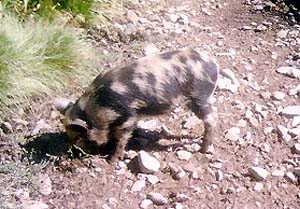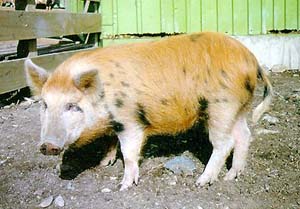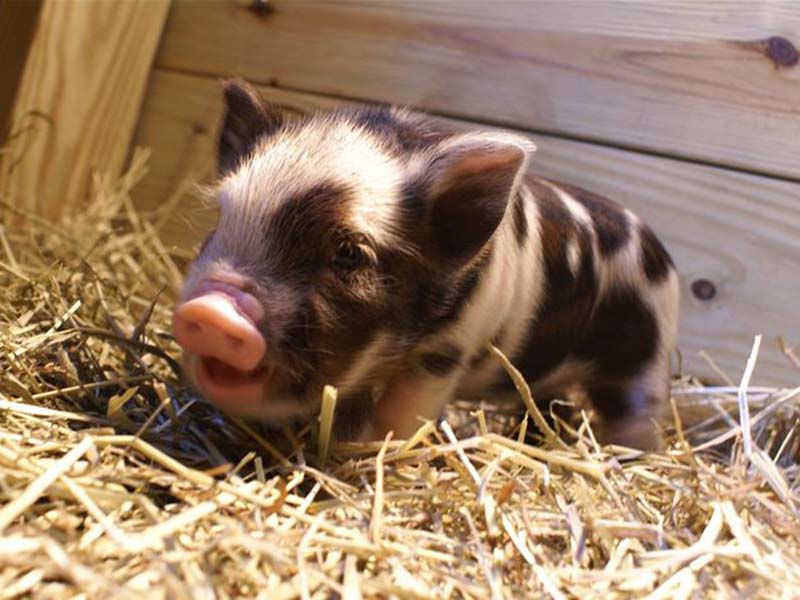Arapawa Island Swine
 The exact origin of the feral pigs of Arapawa Island in the Marlborough Sounds, New
Zealand, is not known and has given rise to much speculation. It has been suggested
that they were introduced by whalers and early farmers on Arapawa Island during the
middle of the nineteenth century, as no feral livestock was seen on Arapawa Island
by visitors who described the island in some detail in the late 1830s. The breed has
remained pure and roamed parts of the island ever since. The wild pigs have stories
of ferocity, but first-hand encounters reveal they have more of a "leave us alone
and we'll leave you alone" attitude toward humans. They are similar to the original
Oxford Sandy-and-Black or the unimproved Berkshires and Tamworths. Several attempts were made over the years to catch some of the pigs, but until the
late 1990s there were only a few adults on the
The exact origin of the feral pigs of Arapawa Island in the Marlborough Sounds, New
Zealand, is not known and has given rise to much speculation. It has been suggested
that they were introduced by whalers and early farmers on Arapawa Island during the
middle of the nineteenth century, as no feral livestock was seen on Arapawa Island
by visitors who described the island in some detail in the late 1830s. The breed has
remained pure and roamed parts of the island ever since. The wild pigs have stories
of ferocity, but first-hand encounters reveal they have more of a "leave us alone
and we'll leave you alone" attitude toward humans. They are similar to the original
Oxford Sandy-and-Black or the unimproved Berkshires and Tamworths. Several attempts were made over the years to catch some of the pigs, but until the
late 1990s there were only a few adults on the  mainland of New Zealand, and they were critically endangered on Arapawa Island itself.
Then in 1998 four healthy piglets were recovered from the Island and these have been
successfully bred from, although numbers over-all are still critical. Arapawa pigs
are somewhat larger than some other New Zealand feral pigs and many are an attractive
tan with black patches. However, other colors occur, including pure black.
mainland of New Zealand, and they were critically endangered on Arapawa Island itself.
Then in 1998 four healthy piglets were recovered from the Island and these have been
successfully bred from, although numbers over-all are still critical. Arapawa pigs
are somewhat larger than some other New Zealand feral pigs and many are an attractive
tan with black patches. However, other colors occur, including pure black.

References
Porter, Valerie, 1993, Pigs - A Handbook to the Breeds of the World, Comstock Publishing Associates, Ithaca, New York, pp 256
Betty Rowe, Picton, New Zealand
